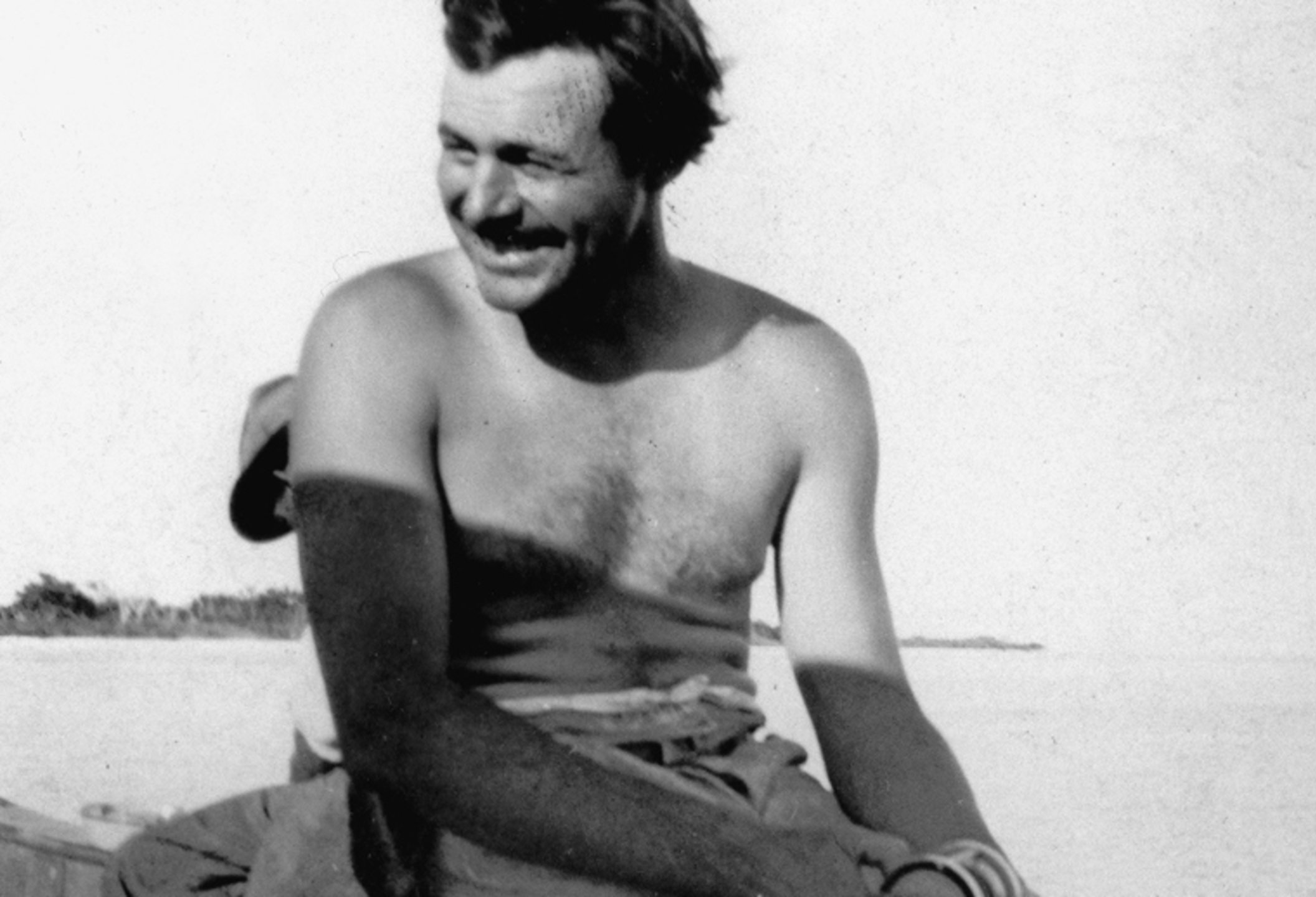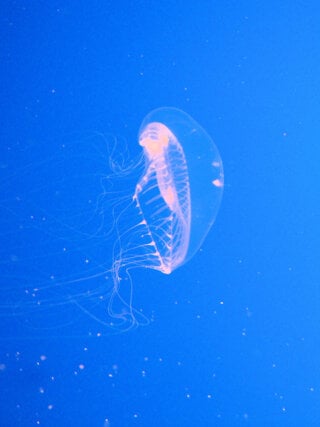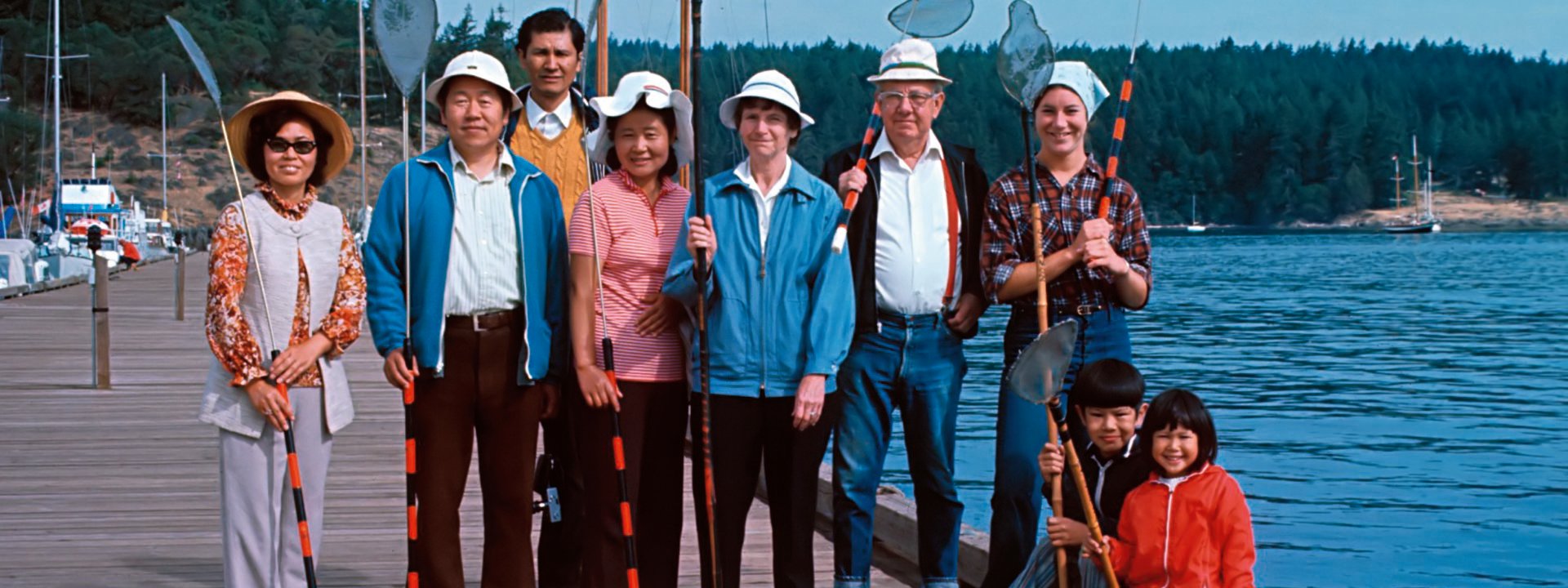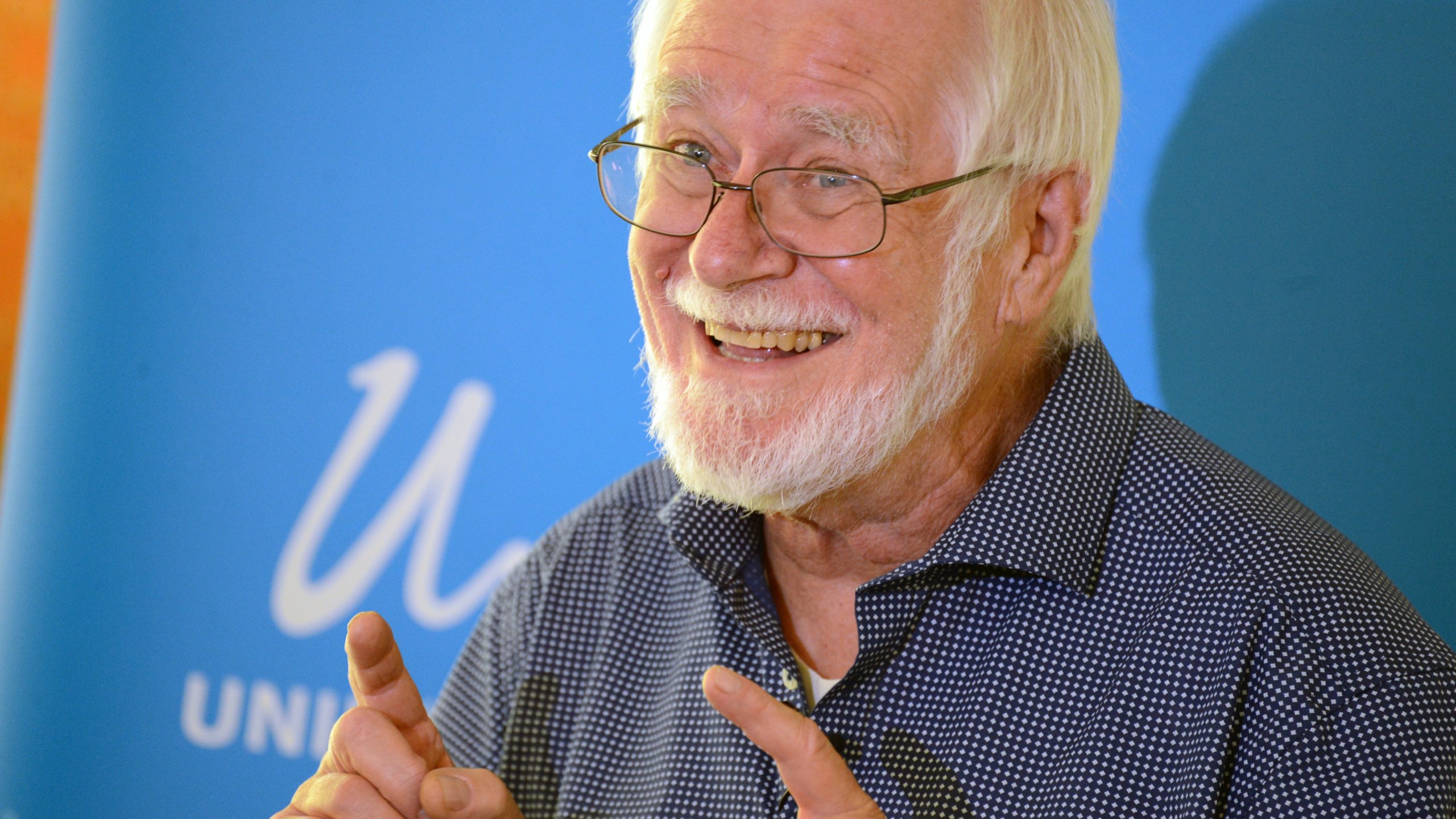The human body contains about 60% water – without it humans wouldn’t survive. Water regulates our body temperatures and excretes waste through perspiration, urination and defecation. It improves blood oxygen circulation and fights off illness. On Earth, water has many more vital functions. The water cycle, which allows water to take the shape of both snow and rain and fill up our lakes and seas, is an important biological process for all creatures on Earth. Photosynthesis would not be able to take place without water. Given its crucial importance, water has played a role in many of our laureates’ work and research. Let’s take a look at how our Nobel Laureates have been inspired to investigate this liquid further.
Ernest Hemingway
Literature 1954 “for his mastery of the art of narrative, most recently demonstrated in The Old Man and the Sea, and for the influence that he has exerted on contemporary style.”

Ernest Hemingway fishing at Key West in 1928.
Ernest Hemingway’s short novel, ‘The Old Man and the Sea’ (1952) tells the story of an old fisherman’s journey and his long and lonely struggle with a fish and the sea.
Read more about Ernest Hemingway
“Old man’s gotta be the old man, fish has gotta be the fish. You gotta be who you are in this world, no matter what.”
– Ernest Hemingway
Osamu Shimomura
Chemistry 2008 “for the discovery and development of the green fluorescent protein, GFP.”

Osamu Shimomura’s jellyfish Aequorera victoria.
After surviving the US bombing of Nagasaki, Osamu Shimomura became a marine biologist. After many years of hard work, he became known as the man who discovered Green Fluorescent Protein (GFP). Osamu Shimomura managed to isolate GFP from the jellyfish Aequorea victoria in the 1960s and found that the protein glowed green when illuminated with ultraviolet light. GFP is widely used in molecular biological research. By using GFP as a genetic marker, researchers are able to study how cellular functions take place.
Read more about Osamu Shimomura

Osamu Shimomura and his family fishing. © Osamu Shimomura, originally published in ‘A glow in the dark’.
Muhammed Yunus
Peace 2006 “for their efforts to create economic and social development from below.”
Muhammed Yunus was born in 1940 in the seaport city of Chittagong. After becoming a professor, Yunus established the Grameen Bank in Bangladesh in 1983, fueled by the belief that credit is a fundamental human right. His objective was to help poor people escape from poverty by providing loans on terms suitable to them and by teaching them a few sound financial principles so they could help themselves. As part of their work, Grameen Bank and Yunus promotes microfinance approaches to providing clean water.
Read more about Muhammed Yunus

Muhammad Yunus and loan holders of Grameen Bank. Copyright © Grameen Bank Audio Visual Unit, 2006.
Peter Agre
Chemistry 2003 “for the discovery of water channels.”
Transporting water molecules through the surface layer of cells is one of the fundamental processes of life. In 1990, Peter Agre managed to isolate a water canal protein that moves water molecules through the cell membrane. The protein was given the name aquaporin. Channels that allow the passage of water but not other substances are crucial for processes such as the kidney’s capacity to recover water from urine.
Sir Derek Walcott
Literature 1992 “for a poetic oeuvre of great luminosity, sustained by a historical vision, the outcome of a multicultural commitment.”
Derek Walcott reads Sea Grapes
The incisive poet Derek Walcott was inspired by Pablo Neruda and Walt Whitman when writing this poem. Walcott concludes ‘Sea Grapes’ by marking the emotional tenor or what literature can or cannot do: “The classics can console. But not enough.”
Read more about Sir Derek Walcott
Jacques Dubochet
Chemistry 2017 “for developing cryo-electron microscopy for the high-resolution structure determination of biomolecules in solution.”
In the early 1980s, Dubochet did something that should be impossible. He cooled water so rapidly that it solidified in its liquid form around a biological sample – almost like glass. The technique became known as water vitrification. Unlike biomolecules frozen in ice, those frozen in vitrified water retain their natural shape so they can be studied as they appear in the body.
Read more about Jacques Dubochet

Jacques Dubochet was the first person to vitrify water. Photo: Félix Imhof, © UNIL
This article was made in connection with the Nobel Week Dialogue 2018 with the theme “Water matters”.
First published November 2018